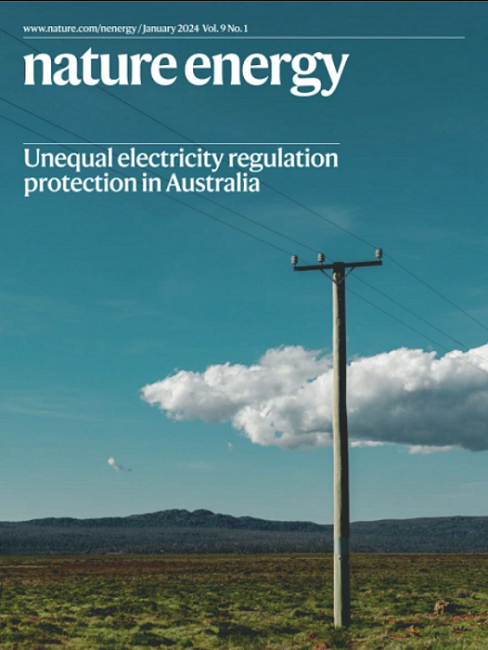钙钛矿太阳能电池化学惰性低维界面的选择性模板生长
IF 60.1
1区 材料科学
Q1 ENERGY & FUELS
引用次数: 0
摘要
化学惰性低维(CI LD)卤素金属酸盐界面包含低反应性大体积阳离子,可以解决钙钛矿太阳能电池(PSCs)效率和稳定性之间的权衡。然而,它们的形成受到它们的大体积阳离子的低反应性和它们的前体在与钙钛矿相容的正交溶剂中的溶解度限制的阻碍。在这里,我们介绍了一种选择性模板生长策略,该策略利用传统的亚稳态LD接口作为模板,通过有机阳离子交换过程驱动更稳定的CI LD接口的生长。我们的原型psc在1.235 cm2的有效面积上实现了25.1%的效率,这是目前报道的1 cm2 psc的最高效率。在85°C温度下,运行1000小时和热老化1100小时后,psc的初始效率分别保持在93%和98%以上。这种策略的多功能性打开了对CI LD接口的访问,为开发更高效、更稳定的psc铺平了道路。本文章由计算机程序翻译,如有差异,请以英文原文为准。


Selective templating growth of chemically inert low-dimensional interfaces for perovskite solar cells
Chemically inert low-dimensional (CI LD) halogenometallate interfaces incorporating low-reactivity bulky cations could address the trade-off between efficiency and stability in perovskite solar cells (PSCs). However, their formation is hindered by the low reactivity of their bulky cations and solubility constraints of their precursors in orthogonal solvents compatible with underlying perovskites. Here we introduce a selective templating growth strategy that leverages conventional metastable LD interfaces as templates to drive the growth of more stable CI LD interfaces through an organic cation exchange process. Our prototype PSCs achieve efficiencies of 25.1% over an active area of 1.235 cm2—among the highest reported for 1-cm2 PSCs. The PSCs retain over 93% and 98% of their initial efficiency after 1,000 h of operation and 1,100 h of thermal ageing at 85 °C, respectively. The versatility of this strategy unlocks access to CI LD interfaces, paving the way for the development of more efficient and stable PSCs. Low-dimensional perovskites afford high efficiencies in solar cells but at the expense of stability. Rao et al. develop a template growth approach to form low-dimensional perovskites from low-reactivity and hence more stable organic cations.
求助全文
通过发布文献求助,成功后即可免费获取论文全文。
去求助
来源期刊

Nature Energy
Energy-Energy Engineering and Power Technology
CiteScore
75.10
自引率
1.10%
发文量
193
期刊介绍:
Nature Energy is a monthly, online-only journal committed to showcasing the most impactful research on energy, covering everything from its generation and distribution to the societal implications of energy technologies and policies.
With a focus on exploring all facets of the ongoing energy discourse, Nature Energy delves into topics such as energy generation, storage, distribution, management, and the societal impacts of energy technologies and policies. Emphasizing studies that push the boundaries of knowledge and contribute to the development of next-generation solutions, the journal serves as a platform for the exchange of ideas among stakeholders at the forefront of the energy sector.
Maintaining the hallmark standards of the Nature brand, Nature Energy boasts a dedicated team of professional editors, a rigorous peer-review process, meticulous copy-editing and production, rapid publication times, and editorial independence.
In addition to original research articles, Nature Energy also publishes a range of content types, including Comments, Perspectives, Reviews, News & Views, Features, and Correspondence, covering a diverse array of disciplines relevant to the field of energy.
 求助内容:
求助内容: 应助结果提醒方式:
应助结果提醒方式:


